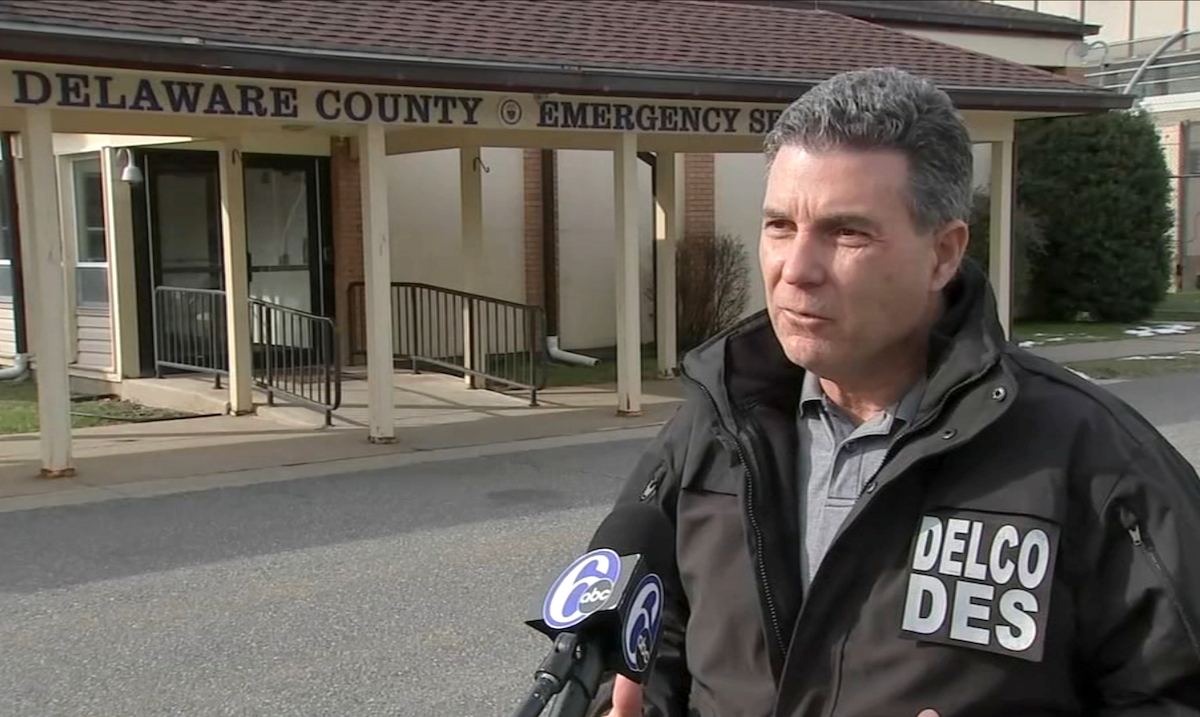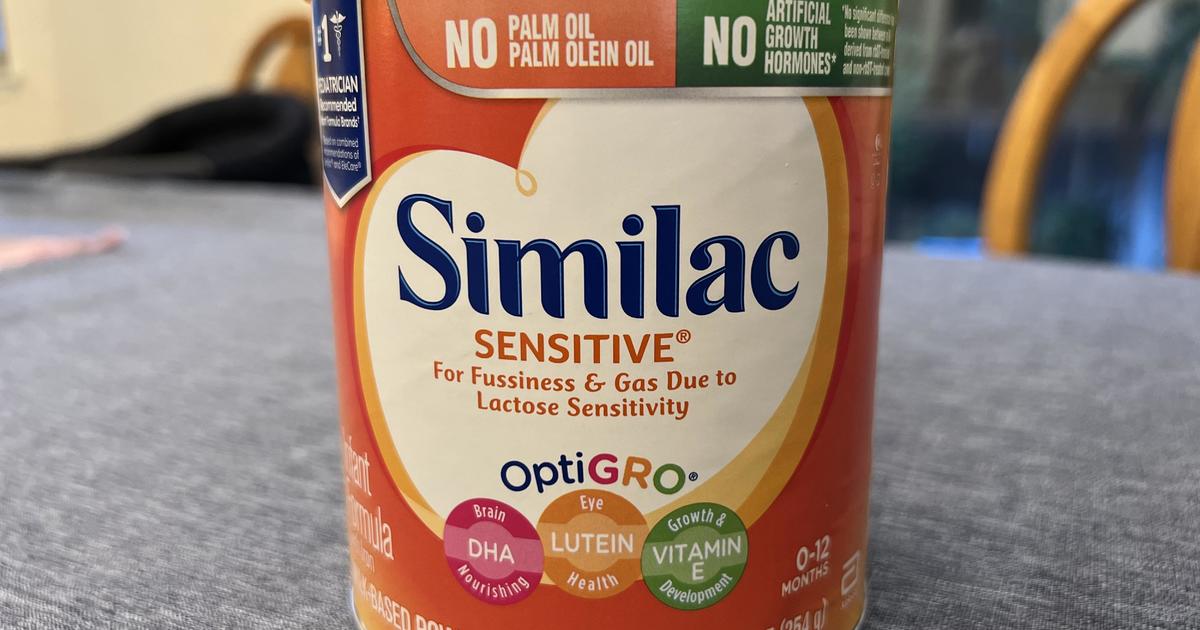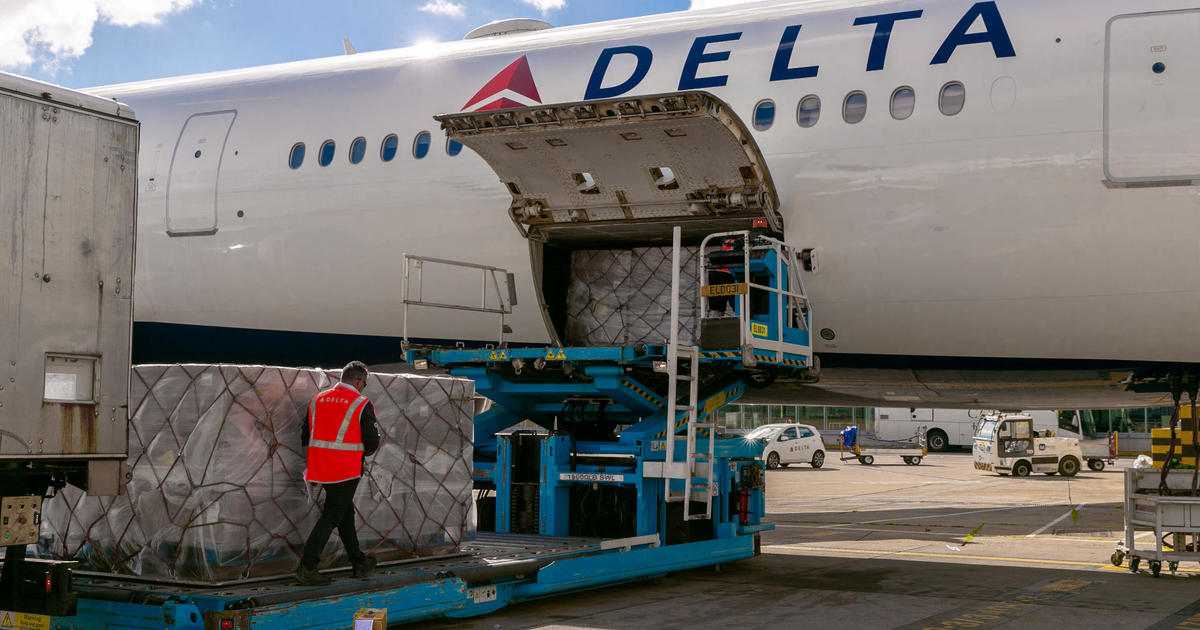Delaware
Delaware families are still grappling with infant formula shortages, price hikes

After a bacterial contamination led to a massive recall of infant formula in 2022, parents faced widespread shortages and price hikes. Formula is still unaffordable for many new parents. The Bureau of Labor Statistics said in just the past year, the cost of baby food and formula has gone up more than 8%.
The First State is giving away the last of the infant formula it had ordered from overseas last year as part of an initiative by Lt. Gov. Bethany Hall-Long to get the food to desperate parents unable to find it on grocery shelves.
That effort saw 44,000 canisters of formula shipped into Delaware from Australia last year. Parents in high-poverty areas were first limited to one 28-ounce can, but that limit has since been removed. There are about 12,500 canisters left, with statewide distribution points. This size canister can produce 20–24 bottles, Hall-Long said.
One of those distribution partners is the Food Bank of Delaware. CEO Cathy Kanefsky said that while supply has rebounded, scarcity is still an issue.
“If you don’t find it, call the Food Bank because we can make sure that we do have it,” she said at a Harper’s Heart event to raise public awareness of the state’s remaining cache of formula. “We do mobile distributions throughout the communities in Delaware as well. But again, we want to make sure that it’s not in a truck or on a shelf, it’s in your home.”
Abbott Nutrition voluntarily recalled several infant formulas in early 2022, leading to nationwide supply disruptions across the U.S. In a report issued by the Federal Trade Commission in March, the agency blamed the concentration of the market as a contributing factor. Abbott, Mead Johnson and Gerber controlled about 84% of the manufacturing of formula that year.
In a statement accompanying the report, members of the FTC said “families often have little choice when it comes to infant formula brands and can be highly sensitive to price hikes and supply disruptions.” There are also specialty types of formulas which can be more sensitive to supply changes because they help babies who have special needs, including digestive issues, allergies and metabolic disorders.

Delaware
Former Delaware County emergency services director faces assault, harassment charges

From Delco to Chesco and Montco to Bucks, what about life in Philly’s suburbs do you want WHYY News to cover? Let us know!
The Pennsylvania Office of the Attorney General has filed criminal charges against Delaware County’s former emergency services director Timothy Boyce.
Boyce faces three misdemeanor counts of simple assault, harassment and indecent assault without consent. The charges stem from the same allegations of workplace ageism, discrimination and sexual harassment that led to his May 10 firing.
A preliminary hearing has been scheduled for June 5. Michael S. Dugan, Boyce’s attorney, did not immediately respond to a request for comment. Neither did Boyce.
Boyce was placed on administrative leave on April 25 after two female employees filed complaints with the Equal Employment Opportunity Commission and the Pennsylvania Human Relations Commission, alleging he fostered a hostile work environment.
Delaware
Where is the Delaware River deepest? New map poster shows 113-foot answer

What is the most common shark in florida
On vacation from France, Sandrine Fontaine and her husband, got the memory of a lifetime as they paddled near the coastline.
Sandrine Fontaine
Where is the deepest part of the 330-mile Delaware River? Where it is also widest, where the river meets the Delaware Bay? Try Narrowsburg, New York. A new map has been published showing the mysterious contours of what is called the “Big Eddy Narrows.”
The river, the longest free-flowing river east of the Mississippi, is 113 feet deep at River Mile 290, counting from Delaware Bay, and visible from the bridge connecting Pennsylvania and New York.
The Delaware River’s average depth is only four to five feet, although holes of 12 to 18 feet are not unusual.
A diver with a local search and rescue team said no light penetrates the bottom at all.
Made a map poster
The map is available as an 11-by-17-inch poster that its creator has donated to benefit the non-profit Upper Delaware Council (UDC), announced UDC Executive Director Laurie Ramie.
The map was developed by Lisa Glover of Honesdale, who became enthralled with this unique, local claim to fame of the Delaware River and contacted the UDC.
Although one might muse that the hamlet of Narrowsburg should have been named Deepestburg, its name is derived from its other distinction of being the main stem’s narrowest part. The river courses through a rock canyon before the bridge, where it is only 200 feet wide.
Where to see it
The Big Eddy Observation Deck on Main Street in Narrowsburg has an interpretative sign telling these distinctive topographic features. Here the public also finds a good place to watch for bald eagles as rowboats, canoes, kayaks, and rafts go by.
Perhaps very few people paddling by or on shore looking at this scenic part of the river are aware of the fantastic underwater depth.
This very deep part of the Delaware also is easily seen from the Darbytown Access on the Pennsylvania side.
The interpretative sign at the deck offers two theories of how the 113-foot hole was created. The first is that a long-drowned “plunge pool” was created from a glacial waterfall. The other theory is that a pothole was formed by tumbling rocks scoured out through erosion.
A whirlpool is often visible at the Big Eddy, where the deepest point is located just downstream from the narrows.
Log rafts spun like tops
The deeps at Narrowsburg have been known for a very long time, impacting 19th century log rafters. The Wayne County Herald’s Feb. 20, 1873, edition reported that J.I. Appleby and J.E. Miller, of Narrowsburg, out of curiosity took soundings of the river from a boat. They concluded the river was 101 feet. “Rafts in coming down the Delaware are frequently drawn into this eddy and sometimes detained for days,” the article reads. “Whenever the wind is blowing with any force, rafts are sure to be drawn into this eddy where they have to remain until the wind calms.”
The Herald republished an unattributed column from The Middletown Mercury on Jan. 20, 1881, stating that log rafts caught in the Big Eddy “may spin around like a top for an hour.” Rafts so caught could create a river traffic jam of a hundred rafts. “I have seen 500 rafts in here at one time, some of them on top of each other, and some turned up on edge, and others bottom side up,” the columnist penned.
Extensive research
The UDC press release states that Glover read articles from the UDC’s “The Upper Delaware” newsletter which led her to interviews with National Park Service divers who had measured the hole. Glover also found various illustrations.
She spoke of her desire for an accurately detailed map of the river bottom with the hope of potentially solving the mystery. Although topographic maps exist showing the elevation of landforms above “sea level,” bathymetric maps show depths of landforms below water.
Glover, in her research, discovered that the U.S. Geological Survey (USGS) had published a LiDAR scan of the Delaware River in 2020 and reached research scientist John Young, who provided a digital map focused on the Big Eddy section, the press release states.
Obtaining a map
From her research, Glover designed a topobathymetric color map with 10-foot contour lines and to-scale cross sections of The Narrows and The Deeps, printed 50 copies, and offered a stack to the UDC to share with the public as a fundraiser.
The Big Eddy Narrows poster is available for a $20 donation to the UDC.
Contact Administrative Support Stephanie Driscoll at stephanie@upperdelawarecouncil.org or 845-252-3022, or stop by the UDC’s office at 211 Bridge St. in Narrowsburg (next to the firehouse) on weekdays for pick-up.
Payment must be by check or cash. Add $3 for mail orders.
Glover is affiliated with Highlights for Children, the Stourbridge Project, the Wayne County Arts Alliance and the Center on Rural Innovation, for which she is their Placemaking Fellow.
She holds a bachelor’s degree in architecture and a master of engineering degree from Lehigh University and likes to use a paddle board. Her website is lisathemaker.com.
Peter Becker has worked at the Tri-County Independent or its predecessor publications since 1994. Reach him at pbecker@tricountyindependent.com or 570-253-3055 ext. 1588.
Delaware
ChristianaCare doctors in Delaware look to unionize, citing need for better benefits

NEWARK, Delaware (WPVI) — ChristianaCare physicians in Delaware have filed paperwork with the National Labor Relations Board to form a union.
Doctors say in recent years, issues such as burnout, being understaffed, recruitment, and retention have gone unaddressed by the administration.
Now, they felt they had no other choice.
“I think our hands were forced to do this. All of the physicians are reaching a breaking point,” said ChristianaCare Dr. Ragu Sanjeev, one of the leaders of the effort.
Doctors also say “compensation redesign” by the hospital would take away doctors’ paid time off, which they say is essential to preventing burnout.
Under this plan, vacation and other time off would not be compensated.
“That’s what really frustrated us and that’s what broke the camel’s back so to speak,” said Dr. Gennadiy Ryklin with a ChristianaCare.
However, doctors say their goal is better patient care and outcomes, which they believe are being negatively affected by current conditions.
“It always starts in the emergency room and right now, the one thing that we see is patients can’t even get an emergency room bed. We’re practicing hallway medicine,” said Dr. Ryklin.
Among roughly 400 eligible doctors in the system, leaders say there’s about 70% in support to unionize.
Doctors say they want patients’ needs prioritized, more input in decision-making, better benefits, and less corporate influence.
They say there’s been a shift to more doctors employed by hospitals as opposed to working in private practice or being self-employed.
“Corporatization of medicine has expanded its claws over us, how we practice medicine, how we take care of patients,” said Dr. Sanjeev.
“I personally have felt in my five years as an attending physician, and my colleagues that have been in it for decades, they’ve seen that their voice has been lost with the corporatization of medicine, of private equity firms coming in and buying hospitals,” echoed Dr. Ryklin.
In response to doctors’ concerns and efforts to unionize, ChristianaCare issued the following statement to Action News:
“At ChristianaCare, we are proud of our physicians, who deliver world-class care while serving our patients and our community with love and excellence. We believe that continuing to have a direct relationship with physicians is an essential component of our continued shared success. We have received the petition from Doctors Council SEIU Local 10 MD and recognize the right of all employees to vote on whether or not they want a union to represent them.”
Doctors say they want to work with their employers to improve their workplace and care for patients.
“In no way is this adversarial. We want to work together with our employer to enact positive change,” said Dr. Ryklin.
If efforts to unionize are successful, physicians at ChristianaCare Christiana Hospital in Newark, the Wilmington Hospital, and Middletown ER would all be covered.
Unions among physicians aren’t very common, but given conditions at hospitals across the country post-pandemic, it has happened in other places and could be a growing trend, according to Dr. Sanjeev.
“The trend has started primarily due to us being asked to do more and more with less and less of everything, including time and energy. The situation that exists currently does not let us practice medicine the way we want to, which is the right way,” Dr. Sanjeev said.
The National Labor Relations Board confirms it has received the doctors’ petition. Doctors at ChristianaCare hope to have a vote in six to eight weeks.
Copyright © 2024 WPVI-TV. All Rights Reserved.
-

 Politics1 week ago
Politics1 week agoBiden takes role as bystander on border and campus protests, surrenders the bully pulpit
-

 Politics1 week ago
Politics1 week ago'You need to stop': Gov. Noem lashes out during heated interview over book anecdote about killing dog
-

 Politics1 week ago
Politics1 week agoRFK Jr said a worm ate part of his brain and died in his head
-

 News1 week ago
News1 week agoMan, 75, confesses to killing wife in hospital because he couldn’t afford her care, court documents say
-

 World1 week ago
World1 week agoPentagon chief confirms US pause on weapons shipment to Israel
-

 Politics1 week ago
Politics1 week agoHere's what GOP rebels want from Johnson amid threats to oust him from speakership
-

 World1 week ago
World1 week agoPro-Palestine protests: How some universities reached deals with students
-

 World1 week ago
World1 week agoConvicted MEP's expense claims must be published: EU court




















